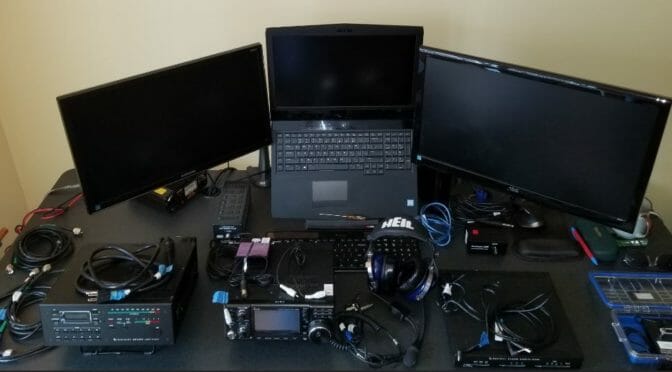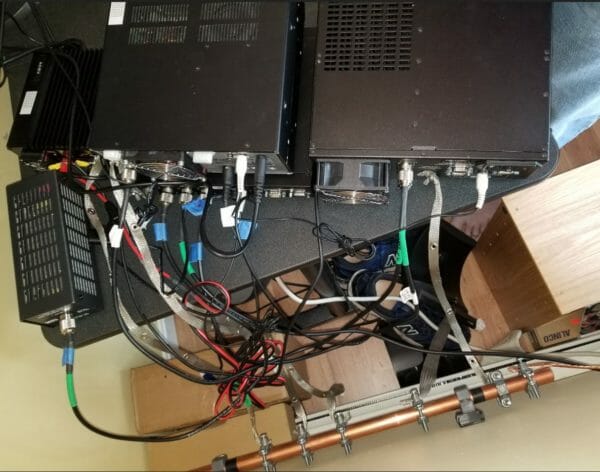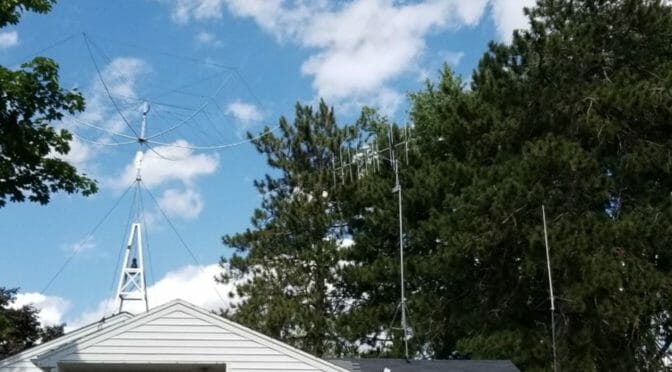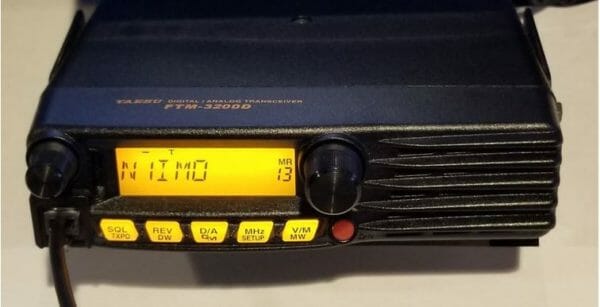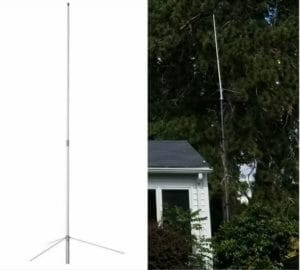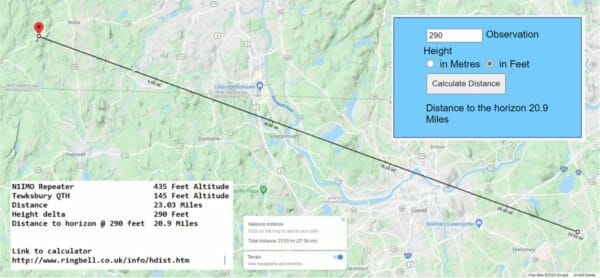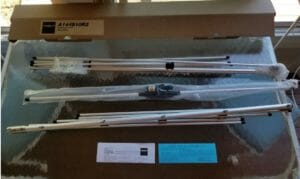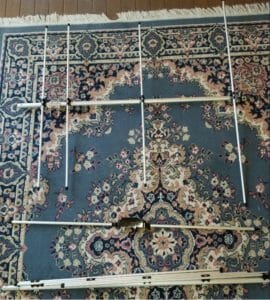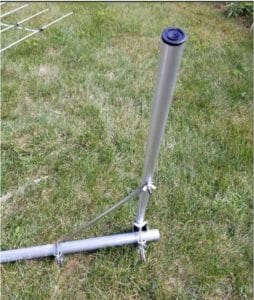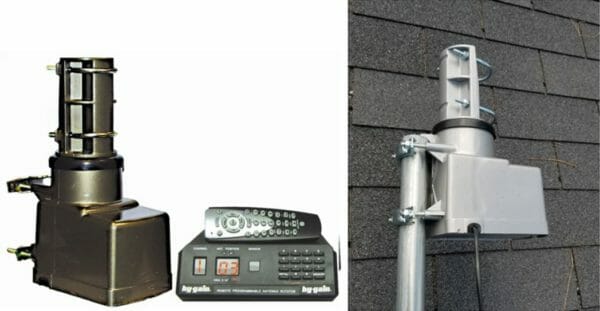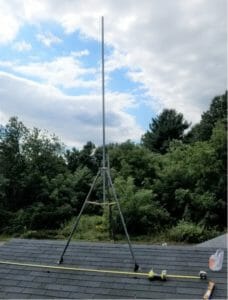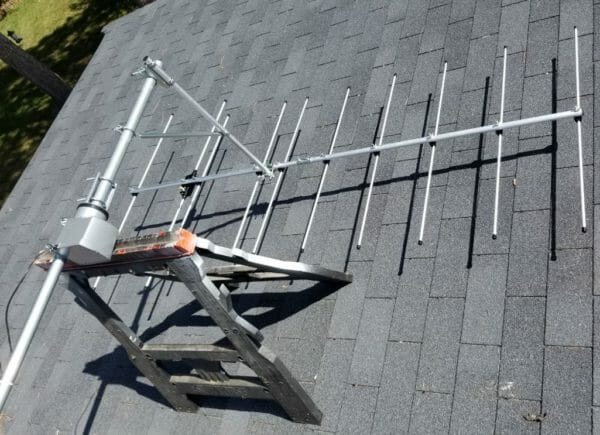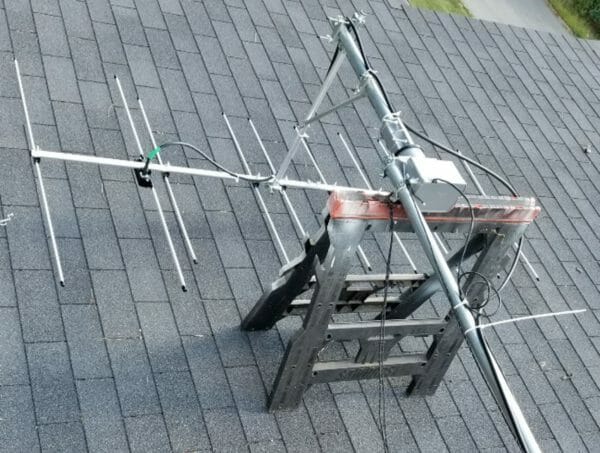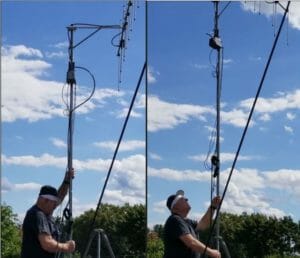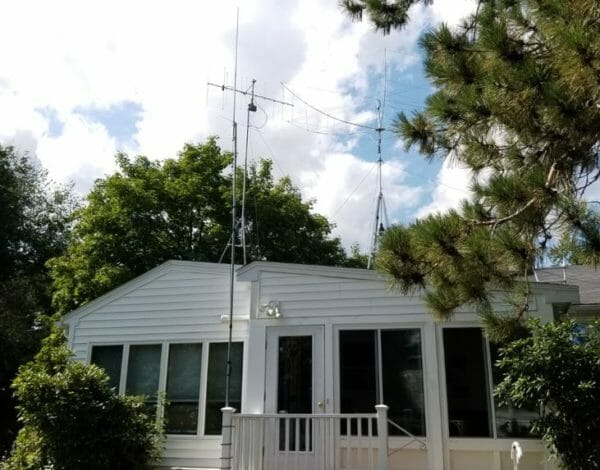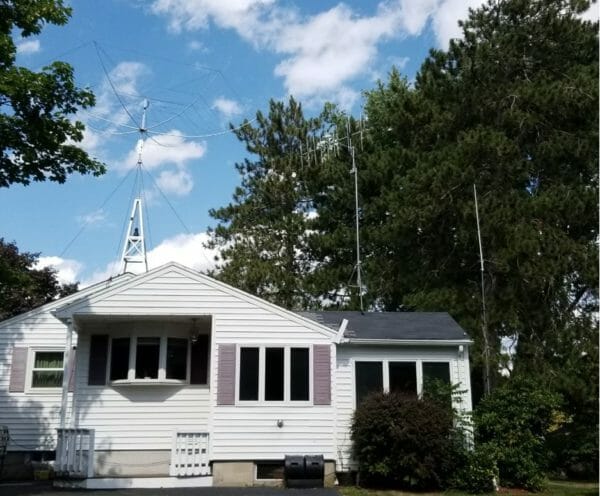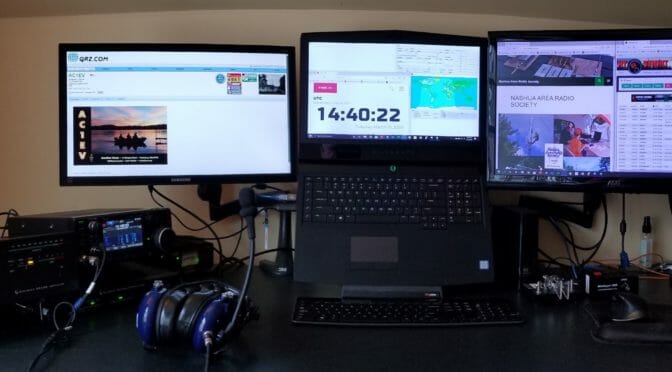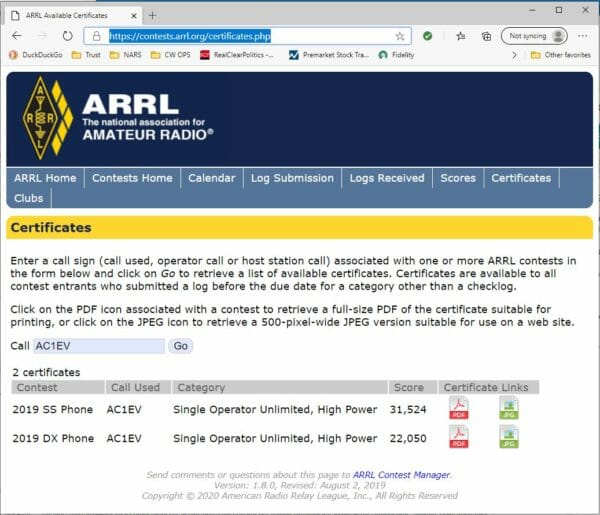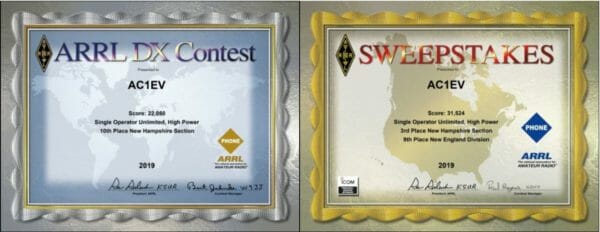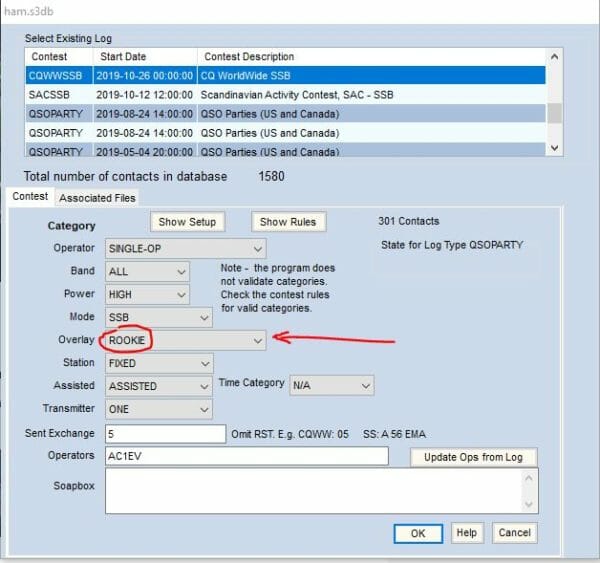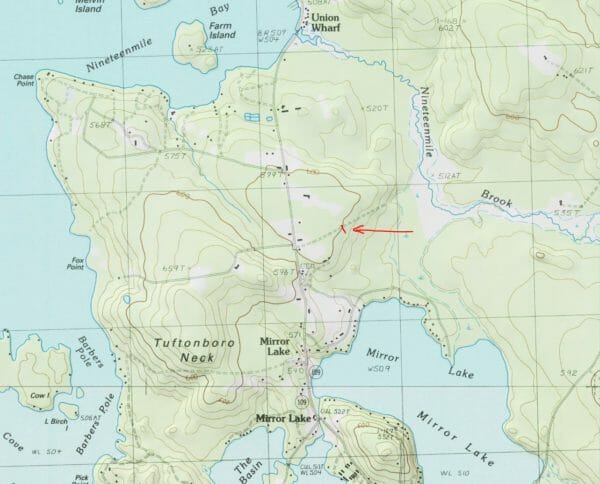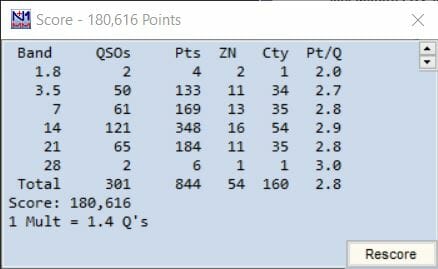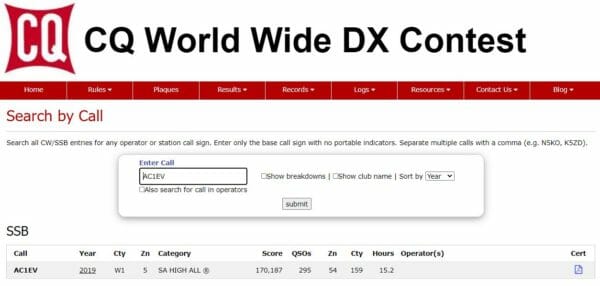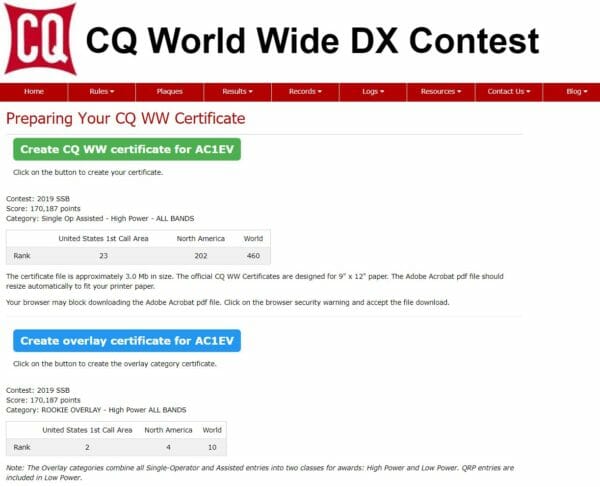One Radio, Two Shacks
My wife and I have two houses, one in MA and the other in NH. I can afford to have an antenna set up at each location but duplicating the radio and amplifier is more expensive. The point of the article is to describe how I transport the interior of my shack from one QTH to another. As a new ham, I focused on building a shack in my primary QTH in MA. Additionally, I wanted to be able to operate from our second home in NH. My solution was to put some effort into putting up a good antenna there and I would just bring my “rig” up to NH when we went there. I could have set up remote access from the NH QTH to my MA QTH, but there was something about the property that made me want to have an antenna up there.
Advantages of operating from two locations
The MA QTH is in Tewksbury, MA, and has all the RF noise present in a suburban environment. Additionally, the terrain was flat, so my antenna height above my roof was all I had. The NH QTH offered many advantages. The first was there were many tall trees over 80 feet high. Another advantage was the house was on top of an 85-foot hill. The RF environment in the rural forest setting was noticeably quieter. Installing an antenna high up in one of the trees on top of the hill is powerful. I ended up installing an 8010 EFHW antenna from MyAntennas.com which you can view here. This second article discusses the topography of the NH QTH and how well the antenna worked in the 2019 CQ World-Wide DX SSB Contest. A disadvantage to operating remotely was that power and internet at the NH QTH were not reliable and I could anticipate losing connectivity multiple times a year. I think this is a good case for wanting to operate locally from both locations. A few hundred dollars for the antenna installation was an amount I could handle that would not eat into the Ham budget for the primary station in MA. Duplicating the major components of that station would cost around $4500 which may happen someday, but until then, I will transport them between shacks.
One Radio, Two Shacks – Moving the Components Between Shacks
Here is what my MA shack looks like
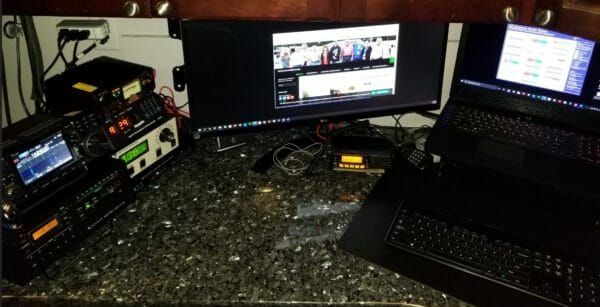
Icom 7300, Elecraft KPA500 amp, and KAT500 Tuner are the core components that need to travel between shacks.
When I arrive at the NH QTH this is what the shack there looks like.
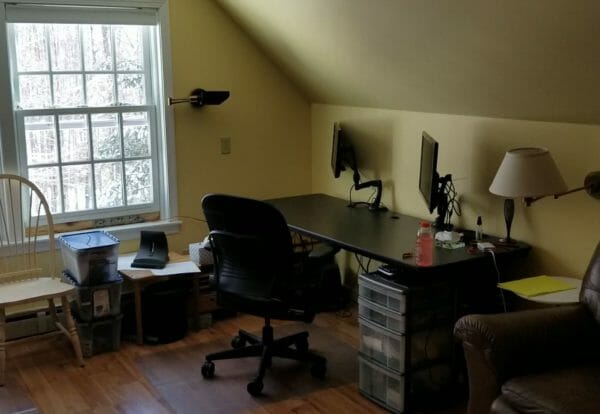
In addition to the radio gear, I bring my laptop.
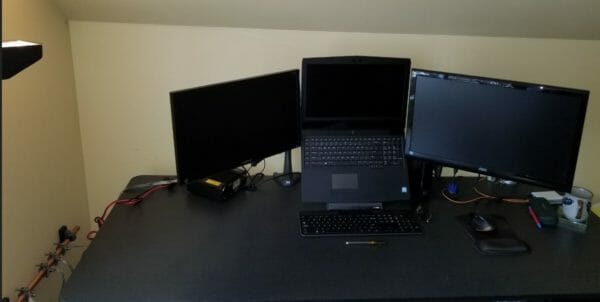
I packed all the gear required to set up the NH Shack in these two toolboxes. Pelican cases would be great, but these were around $60.00 at Home Depot. They are watertight and the bottom one has wheels.
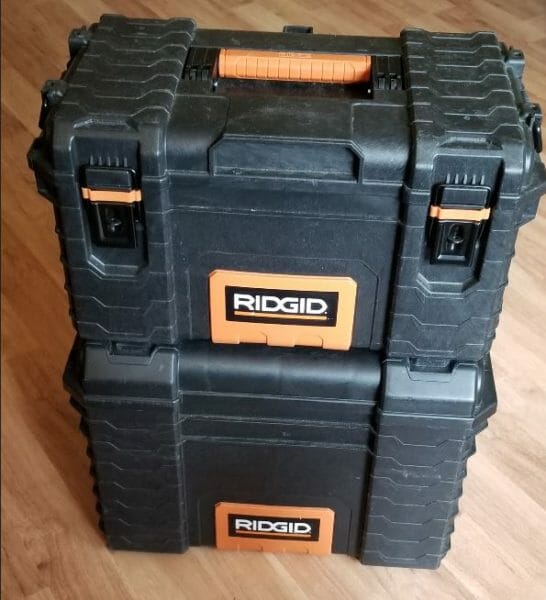
Let’s unpack the smaller one on the top first.
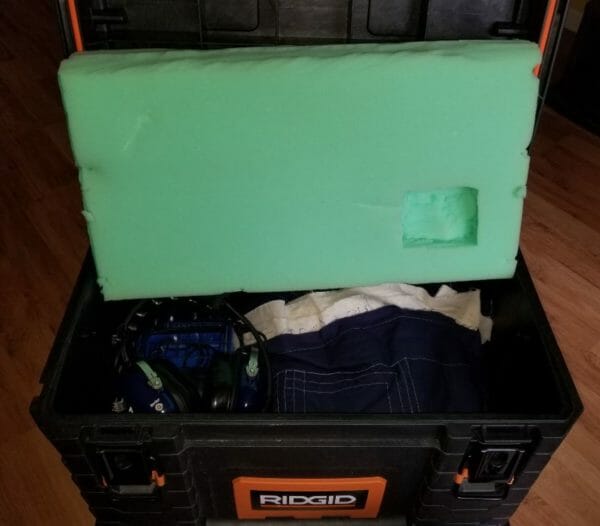
Inside is the IC-7300, Heil Pro 7, and Bencher CW Key.
The big toolbox is full and quite heavy.
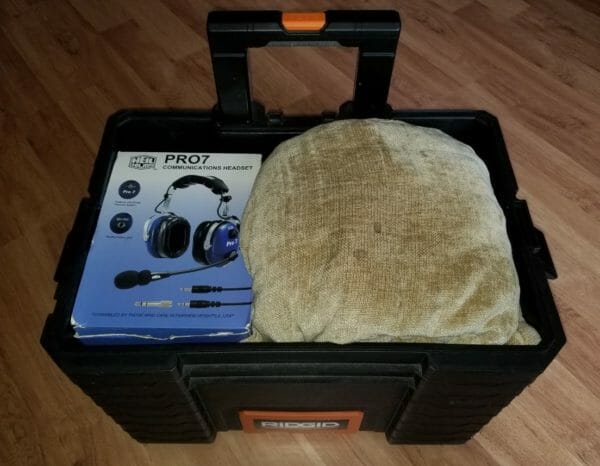
The box from the Pro7 headset holds the loose cables and fits in the toolbox perfectly.
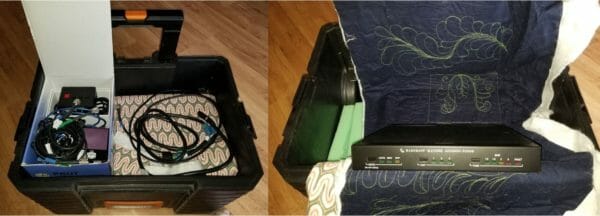
The KAT500 Tuner is unwrapped. You can see below how well the toolboxes fit the components.
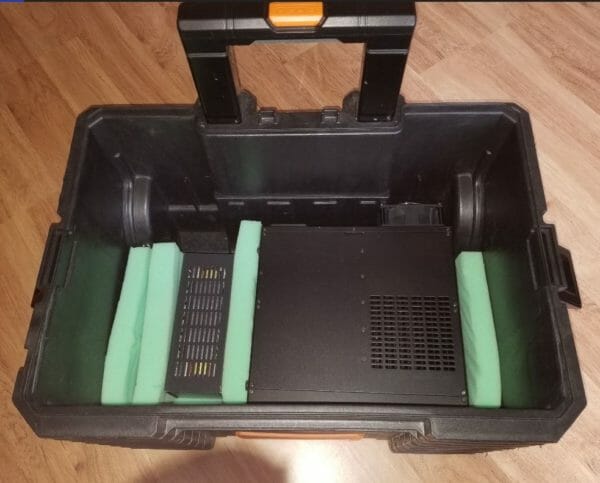
Dummy Load and KPA500 amp on the bottom of the large toolbox.
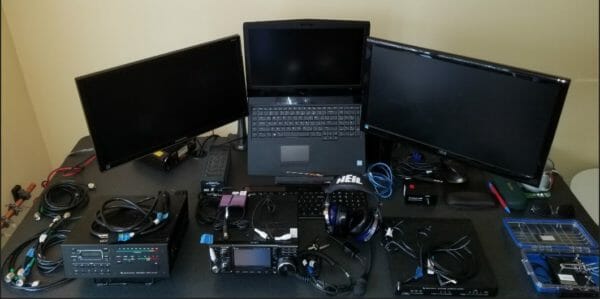
Here are all the components laid out. Key cords and cables are labeled.
I connected the components. The copper pipe is a bus for common ground. The wire on the right side connects to the house ground outside. The radio is noticeably quiet.
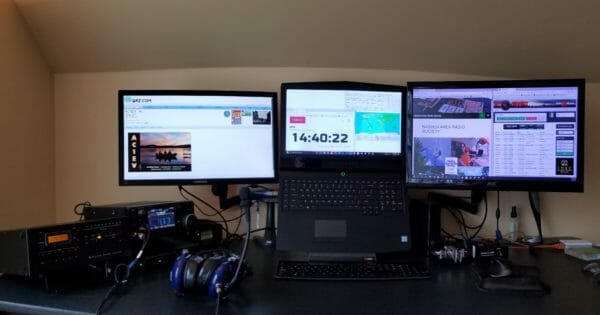
The shack is ready.
One Radio, Two Shacks – Here’s How Set Up Goes…
Click on the above image for a hyper-lapse video of me putting the shack together.
Jon, AC1EV

